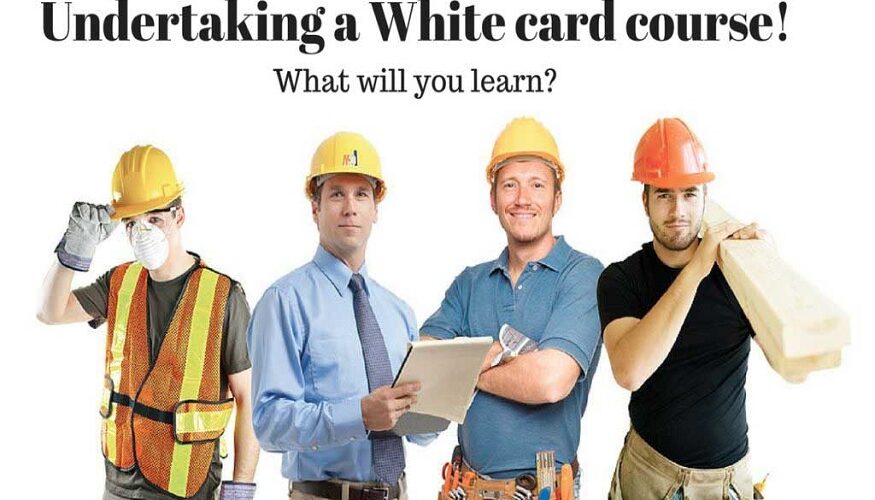When you work on a construction site, whether in the US or elsewhere, you’re required to carry a white card that shows your name and contact information. The card is also used as an induction (formerly known as the pre-placement) card.
The Construction Induction White Card in Melbourne (hereinafter referred to as “the card”) is used by contractors and employers in order to confirm that an individual is qualified for employment on a particular project or at a specific site.
The card must be produced during the pre-placement interview process. It must be presented within three days of reporting for work if it is not produced during the recruitment process when applied for employment.
- Verbally report construction hazards and risks : Report construction hazards and risks to management, point out possible safety problems, discuss OHS issues with others.
- Relay information to others : Use verbal communication to convey information when the situation demands it, relay messages to other members of a team or group.
- Discuss OHS issues with others : Have input in body language that demonstrates understanding of safety procedures and can also provide relevant information as needed by management.
- Understand safety signs and symbols : Understand what the symbols on construction documents mean, recognize personal protection equipment associated with certain labour activities, identify any potential hazardous materials found at a work site or within the surrounding area of work activity (such as chemicals).
- Identify common construction hazards : Look for any potential hazards such as overexertion, exposure to fumes, falls from heights and electrical hazards.
- Understand the basic principles of risk management : Be able to identify different types of risks, understand the relationship between safety and productivity.
- Understand emergency procedures : As a construction worker you will be required to have an understanding of emergency situations, fire drills, evacuation/contingency plans and hold other workers accountable to practice them regularly.
- Understand first aid procedures : First aid skills are important in the event of workplace accidents or injuries you can apply first aid to minimize the damage or stop bleeding until they get further treatment or at least seek medical help if required.
- 9. Understand traffic control procedures : Know the proper way to handle situations that may require temporary changes in the timing of a construction project and also know about traffic control measures to help with safety (noise abatement, safety zones, etc.)
- Understand working at heights : Know how to work safely at height, what to do when you are on the scaffold and understand how high the man is swinging when on a platform.
- Understand fire safety : Know what it means and what Fire Safety Regulations mean before entering a building or other workplaces and know their responsibilities.
- Understand safety on site : Know how to handle emergency situations and how to protect yourself when working at the worksite.
- Understand emergency procedures for other workers : Is it your responsibility as a worker to ensure that others on site follow emergency procedures, in what way is your responsibility?
- Understand Emergency Medical Aid (EMA) : Understand the requirements of EMA laws, regulations and codes when providing medical assistance.
- Know basic first aid skills :
Know some basic first aid treatments such as splints, bandaging, sting treatment and any first-aid kits you have access to
- Understand electrical safety : Understand the basics of electrical knowledge and understand when you are working at risk of shock.
- Understand personal protective equipment (PPE) : Know what PPE you need to work in specific circumstances (e.g. harnesses, hardhats, high visibility clothing etc.)
- Understand ladder safety : What you should or shouldn’t do when working on a ladder and understand the difference between fixed and extendable ladders.
Conclusion
The above gives you a good idea of what skills are needed to be a safe, efficient construction worker and also that you’ll need to have knowledge of lots of things to do your job effectively. However, the best way to prepare yourself for a successful start in the workplace is still just to get involved and do as much practical work as possible.

